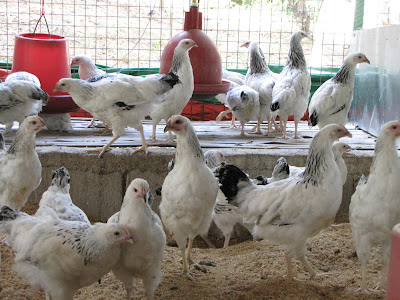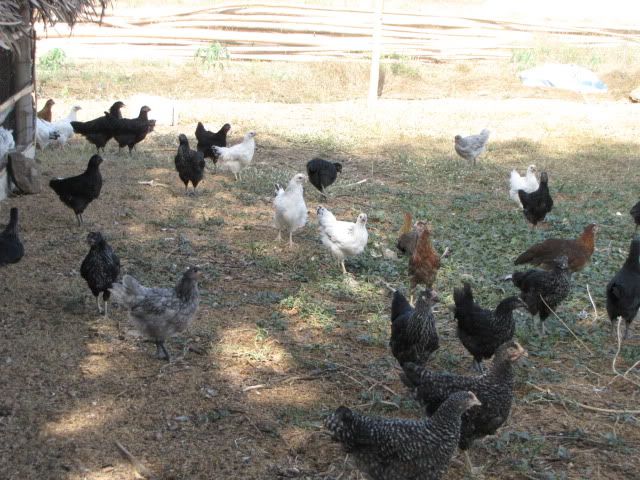
These birds are very majestic when you see them. The production of the Final Hybrid of Light Sussex layers will be coming from the eggs of these breeders.
PARAMETERS OF THE FINAL HYBRID
DOMINANT SUSSEX D 104
GROWING PERIOD: 1 - 18 WEEK OF AGE
Livability.............................................................................95 - 97%
Body weight at 18 weeks -........................................females 1,50 kg
Feed consumption to 18 weeks per 1 females...................... 6,30 kg
Body weight at 18 weeks -......................................... males 2,10 kg
Feed constumption to 18 weeks per 1 male.......................... 6,80 kg
LAYING PERIOD: 19 - 68 WEEK OF AGE
Livability ...........................................................................93 - 96 %
Laying performance in 23rd life-week...................................... 50%
Top of the laying performance at 29 - 30 week......................... 91%
Number of eggs (hen housed) .................................................290
Number of eggs (hen day production)..................................... 299
Average egg-weight................................................................. 62,0 g
Total Egg Mass for laying period.............................................. 18,50kg
Feed intake per hen a day..........................................................122 g
Feed intake during the period per individual ..............................45 kg
Feed intake per egg................................................................. 155 g
Feed intake per1 kg of eggs.................................................... 2,43 kg
Weight of hen at the end of the period.................................... 2,15 kg
Colour of the egg shell............................................................ brown
Temperament.......................................................................... quiet






